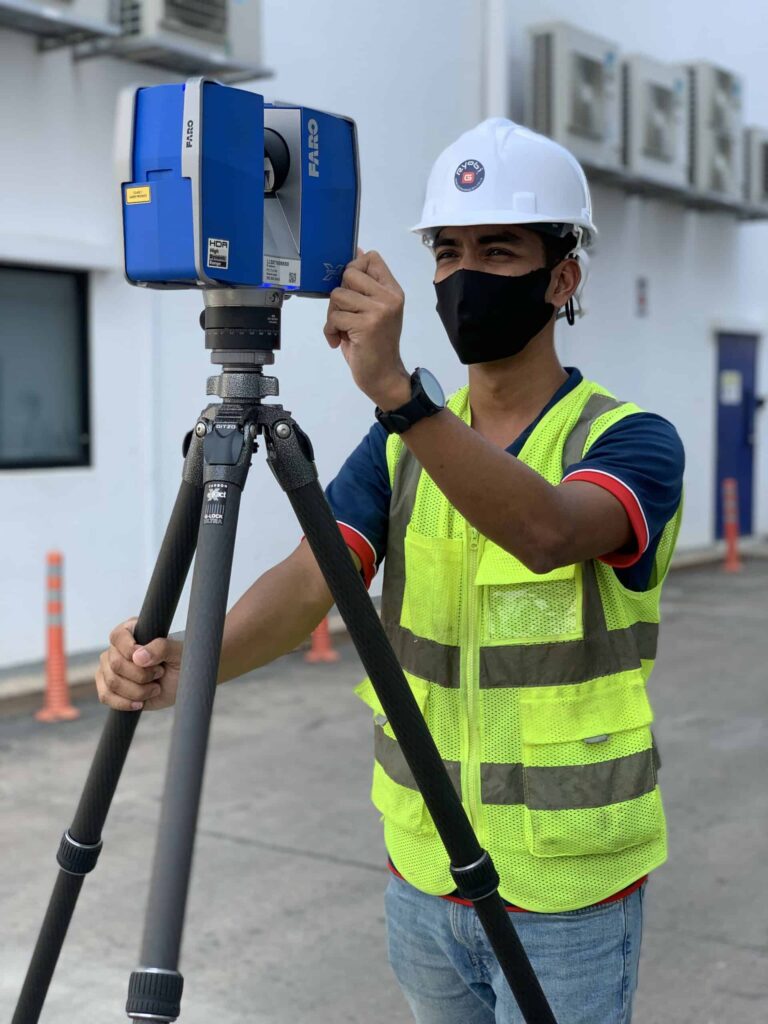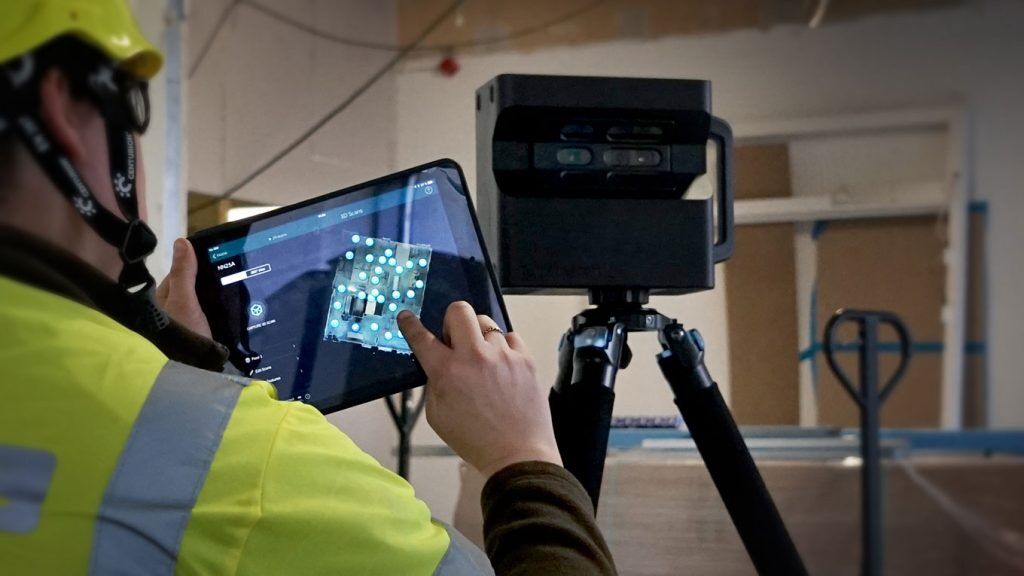Why 3D Scanning Boosts Data Reliability in Architectural Workflows
The Future of Accuracy Dimension: Recognizing the Duty of 3D Laser Scanning Innovation
The landscape of precision dimension is developing with the arrival of 3D laser scanning technology. This development guarantees enhanced precision and effectiveness across different industries. As industries begin to welcome these developments, the effects for project administration and implementation end up being progressively significant. Nonetheless, the transformative impacts of this modern technology prolong beyond mere numbers and measurements, hinting at a more comprehensive shift in how specialists approach their work. What might this indicate for the future?
What Is 3D Laser Scanning Modern Technology?
3D laser scanning technology is an innovative approach utilized to record specific three-dimensional dimensions of physical items and atmospheres. This technology makes use of laser beams to collect information points, which are after that processed to develop in-depth digital representations of the scanned subjects. By sending out countless laser pulses per second, 3D laser scanners can accurately tape the shape, size, and spatial connections of different surface areas.
The process normally involves placing the scanner at different perspective to catch comprehensive data. The resulting point cloud, a collection of millions of data factors, can be evaluated and converted right into 3D designs. Applications of this innovation span multiple areas, including architecture, engineering, and heritage conservation, where it aids in paperwork and analysis. As a non-intrusive method, 3D laser scanning reduces interruption to the environment, enabling extensive assessments of both existing structures and all-natural landscapes, therefore improving understanding and promoting notified decision-making.
Trick Perks of 3D Laser Scanning in Various Industries
3D laser scanning technology provides substantial benefits throughout numerous industries by offering improved accuracy and precision in dimensions. This technology not just enhances operations however also leads to substantial time and price savings. As companies increasingly adopt this ingenious strategy, the advantages become obvious in enhanced project results and performances.
Boosted Accuracy and Precision
The assimilation of laser scanning technology has transformed the means markets come close to dimension and data collection. This modern technology supplies an extraordinary level of precision, catching millions of information factors in a solitary check. Therefore, experts across different areas, such as design, manufacturing, and architecture, can develop extremely detailed 3D models that mirror real-world problems. Improved precision minimizes errors related to typical measurement techniques, making certain that constructions and layouts are based on accurate information. In addition, the ability to catch detailed information permits far better evaluation and decision-making, ultimately resulting in enhanced outcomes. By leveraging 3D laser scanning, sectors can achieve higher requirements of quality, making it an indispensable tool for accurate measurements.
Time and Price Performance
Efficiency in time and price is a substantial advantage supplied by laser scanning modern technology, transforming task implementation across different industries. By swiftly recording thorough 3D information, laser scanning lowers the moment invested in hand-operated dimensions and decreases the threat of mistakes. This speedy information procurement promotes faster decision-making and job timelines, allowing groups to allot sources better. In addition, the innovation lowers the requirement for rework, as precise designs result in much better planning and implementation. Industries such as construction, architecture, and producing advantage significantly, seeing lower costs connected to labor and materials. In general, 3D laser scanning not only boosts operational effectiveness however additionally adds to significant cost savings, making it an invaluable tool in today's competitive landscape.
Applications of 3D Laser Scanning in Architecture and Building and construction
As building and building and construction jobs expand increasingly intricate, the fostering of laser scanning modern technology has become a transformative option. This technology provides precise dimensions and detailed 3D representations of existing structures, promoting even more precise planning and style procedures. Engineers make use of 3D laser scanning to create digital versions that capture detailed details, ensuring that improvements and brand-new building and constructions line up perfectly with existing conditions.

The Role of 3D Laser Scanning in Production Processes
3D laser scanning plays an essential role in producing processes by enhancing top quality control with specific dimensions and data collection. This innovation enables suppliers to identify discrepancies early, decreasing mistakes and waste. In addition, it simplifies production workflows by helping with much better communication and sychronisation amongst groups.
Enhanced Quality Control
Quality control in manufacturing processes has been changed by the assimilation of laser scanning modern technology. This cutting-edge approach permits precise measurements and comprehensive assessments of elements, making sure that they look at more info satisfy rigorous top quality criteria. 3D laser scanning captures complex geometries and resistances, enabling producers to discover variances from style specifications swiftly. This modern technology substantially lowers human mistake related to conventional measurement approaches, supplying dependable and consistent information. By assisting in real-time quality guarantee, it allows positive changes in the manufacturing process, eventually leading to enhanced item dependability and customer contentment. As markets increasingly take on 3D laser scanning, the possibility for improved quality assurance ends up being evident, marking a transformative shift in manufacturing methods.
Streamlined Manufacturing Workflow
Effective production process are increasingly gaining from the integration of laser scanning innovation in manufacturing processes. This modern technology enables quick, accurate dimensions of assemblies and elements, substantially decreasing the time required for arrangement and adjustments. By catching specific geometry, producers can promptly identify inconsistencies in between design specs and real items, enabling instant rehabilitative actions. Furthermore, 3D laser scanning promotes the seamless transfer of data between style and manufacturing groups, enhancing partnership and lowering errors. The technology likewise supports electronic twin development, enabling for real-time surveillance and optimization of making processes. Therefore, organizations can accomplish higher effectiveness, lowered waste, and boosted overall productivity, ultimately driving competitive advantage in the market.
Protecting Heritage: Exactly How 3D Laser Scanning Aids Cultural Preservation
As social heritage websites deal with the hazard of wear and tear and damage, ingenious innovations such as laser scanning become essential devices for conservation initiatives. 3D laser scanning records detailed information of historic structures and artifacts with amazing precision, producing digital models that serve numerous objectives in conservation. These designs enable for precise paperwork of current conditions, making it possible for specialists to check adjustments gradually and examine degeneration risks.
Additionally, laser scanning facilitates digital repair, assisting conservators develop prepare for fixings or recreating lost components without intrusive methods. The modern technology likewise aids in educating the general public, using immersive experiences through digital excursions that highlight the importance of these sites. By incorporating 3D laser scanning into social conservation practices, stakeholders can assure that heritage is protected for future generations while enhancing understanding and admiration of historic contexts.
The Future Outlook: Developments and Patterns in 3D Laser Scanning Modern Technology
Though 3D laser scanning modern technology has currently transformed numerous markets, its future assurances even greater innovations that will boost accessibility, speed, and precision. Emerging trends show an increase in integration with man-made knowledge and artificial intelligence, resulting in smarter data processing and analysis abilities. This harmony will certainly make it possible for quicker decision-making and more precise outcomes in fields such as building, engineering, and heritage preservation.
Developments in hardware are expected to yield lighter, more mobile scanning devices, democratizing access for smaller sized companies and specific professionals. As software application proceeds to progress, easy to use applications will simplify complicated operations, making 3D scanning a lot more available to non-experts
The rise Our site of cloud-based solutions will promote real-time collaboration and data sharing amongst stakeholders, paving the way for structured job management. Jointly, these patterns signal a future where 3D laser scanning technology becomes a necessary device in an also more comprehensive range of applications.
Often Asked Questions
Just How Much Does 3D Laser Scanning Innovation Cost?

What Are the Abilities Called For to Run 3D Laser Scanners?
Running 3D laser scanners calls for technological effectiveness, focus to information, spatial recognition, expertise of software application for information handling, and an understanding of checking principles. Furthermore, strong analytic capabilities and analytical abilities are essential for reliable procedure.
Can 3D Laser Scanning Integrate With Various Other Technologies?
Yes, 3D laser scanning can integrate seamlessly with various other modern technologies, such as Geographic Info Systems (GIS), Building Info Modeling (BIM), and enhanced reality, boosting information accuracy and helping with improved evaluation across various sectors and applications. - 3D Scanning
What Is the Typical Scanning Series Of These Tools?
The typical scanning series of 3D laser scanning gadgets varies extensively, typically in between 50 meters to over 1,000 meters, depending upon the model and application, affecting their suitability for various precision measurement jobs and settings.
Just how Long Does a 3D Laser Scanning Project Take?
A 3D laser scanning task commonly takes anywhere from a few hours to a number of days, relying on variables such as job dimension, intricacy, and needed information. Each project's timeline can differ significantly based on these aspects.
The landscape of precision measurement is evolving with the development of 3D laser scanning technology. 3D laser scanning technology is an advanced method utilized to record specific three-dimensional measurements of physical items and environments. 3D laser scanning innovation supplies significant benefits throughout various markets by giving enhanced precision and precision in dimensions. 3D laser scanning technology has currently changed various industries, its future pledges also greater improvements that will certainly enhance availability, rate, and accuracy. 3D laser scanning innovation typically costs in between $10,000 and $100,000, depending on the tools's capabilities and features.